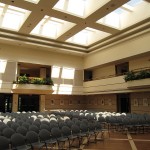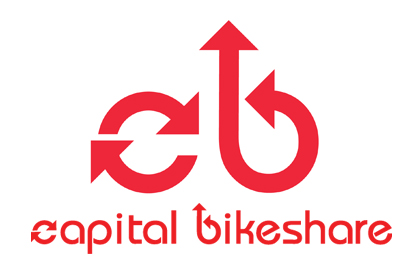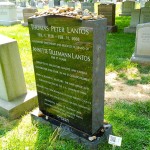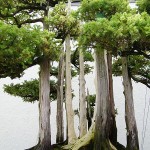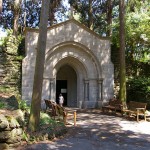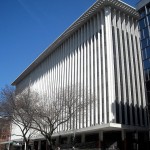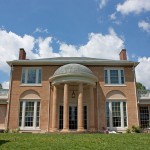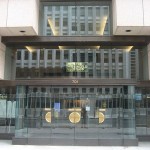Wikimania 2012 and Onward
 Wikimania 2012 has come to an end. A week of pure exhilaration, excitement, energy, and elation drew to a close on the afternoon of July 15, as the remaining attendees turned off their laptops and exited the George Washington University Marvin Center one last time. For some, this had been a chance to see old friends. For all, it was an opportunity to meet new ones.
Wikimania 2012 has come to an end. A week of pure exhilaration, excitement, energy, and elation drew to a close on the afternoon of July 15, as the remaining attendees turned off their laptops and exited the George Washington University Marvin Center one last time. For some, this had been a chance to see old friends. For all, it was an opportunity to meet new ones.
Being at Wikimania, and particularly being here in Washington, DC, provided a great opportunity for open culture and free knowledge enthusiasts to share their passion with the world. For Wikimedia District of Columbia, Wikimania had been about exploring new and exciting possibilities, engaging in active discussions and dialogue, and taking what was learned here back so that we can continue the work to empower people around the world through free access to global knowledge. That is why we chose “Explore. Engage. Empower.” as the theme for Wikimania 2012. And over the course of the past week, the more than 1,400 people from 87 countries who had participated in Wikimania 2012 and its associated events did just that.
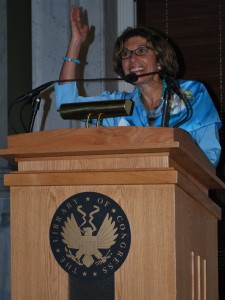
Roberta Shaffer, Associate Librarian of Congress for Library Services, welcomes guests to the Google Opening Reception (Alejandro Linares Garcia, CC BY-SA 3.0)
With support from our sponsors and partners, over 700 people attended our opening reception at the Library of Congress, where the newest Wikipedian in Residence position was announced; more than 1200 participated in the opening ceremony, which featured keynote speeches from the Ada Initiative co-founder Mary Gardiner and Wikipedia founder Jimmy Wales; and our community heard over 275 speakers, many of whom are already active contributors to Wikimedia projects, including the Executive Director of the Wikimedia Foundation, Sue Gardner, and the Wikimedia Foundation Board of Trustees. In addition, we met and talked with the more than 200 participants at Tech@State: Wiki.Gov, and Richard Boly of the State Department’s Office of eDiplomacy shared a letter from Secretary of State Hillary Clinton congratulating attendees on the opening of Wikimania 2012 and Tech @ State. Over the course of 5 days, our 1,400 attendees consumed 3,791 lunches, enjoyed 5,424 cups of coffee, and visited nearly every museum and monument in the Washington metropolitan area (although a citation might be needed). On these explorations, our local Washington, DC, highlights were photographed and many are newly included in Wikimedia Commons, a database of freely usable media files to which anyone can contribute.
One person in our community, to the surprise of some of our guests, is David Ferriero, the Archivist of the United States. In his remarks at the closing ceremony on Saturday, Ferriero discussed the important role that Wikipedia and Wikimedia Projects have for preserving history and documenting cultural heritage. After reminding the audience that the National Archives has contributed more than 120,000 digital files and pictures to Wikimedia Commons, he told the crowd, “…if Wikipedia is good enough for the Archivist of the United States, then it’s good enough for you.”
Lori Byrd Phillips, US Cultural Partnerships Coordinator for the Wikimedia Foundation, reflected on the event, stating that “David Ferriero’s closing plenary illustrated just how inspiring the Wikipedia community can be for institutions and governments looking to become more open and transparent. Though, what was the most inspirational for me was the respect and appreciation shown by the Wikipedia community during the standing ovation for Mr. Ferriero. I’ve known that the Archivist of the United States loves Wikipedia, but last week I was reminded that the Wikipedia community returns that love to those who advocate for the movement.”
David Ferriero, Archivist of the United States, speaks at the Wikimania 2012 Closing Ceremony (Sebastian Wallroth, CC BY-SA 3.0)
We at Wikimedia DC would like to also return the love and thank our wonderful partners, collaborators, sponsors, and, especially, volunteers. Wikimania is an event that is put on largely by a group of dedicated international volunteers who donate their time and skills to ensure that all attendees have a wonderful and enriching experience. Wikimania would not have happened without the remarkable work of this amazing group of people. Kat Walsh, the newly elected Chair of the Wikimedia Foundation Board of Trustees, recognized the contributions that the conference organizers and volunteers made to the overall experience, stating that “The organizing team did an amazing job putting on the largest Wikimania ever, bringing together people from all of the various parts of our movement around the globe and presenting a full program of talks, tours, and workshops. My congratulations and thanks for the great work they’ve done.”
We’re grateful to Kat for her leadership, and we also appreciate our participants’ leadership going forward to make the great ideas shared a reality. We, as diverse individuals and as a community, had the chance over this past week to explore many ideas and engage in lots of discussions during our conference. We have aspirational goals, and we know that will see many positive outcomes from Wikimania 2012 in the months and years ahead.
Wikimedia DC strives to put on events in support of free global knowledge, and our journey has only begun with Wikimania. If you live in the District, Virginia, Maryland, West Virginia, or Delaware, we invite you to become a member and join our Meetup group. Even if you’re outside our area, you can still donate to help support Wikimedia DC’s various programs, such as the Embassy Outreach Initiative, the upcoming Wiki Loves Monuments US, or our other various events and programs, such as edit-a-thons, LibraryLab, or the Wikipedia Campus Ambassador program.
In closing, we’d like to thank our amazing volunteers one more time. We really could not have done this without the help, advise, and support of many people. Although not everyone on our great team is listed below, you can identify and applaud volunteers on Wikipedia through the Wikimania Barnstar. We encourage you to award one to those people who did something special, whether or not they formally volunteered!
Thanks for visiting us in Washington, DC. We hope to see you next year in Hong Kong for Wikimania 2013!
With sincere gratitude,
James Hare and Nicholas Michael Bashour
The Wikimania 2012 Organizing Committee
James Hare – Wikimania Coordinator
Nicholas Michael Bashour – Wikimania Deputy Coordinator
Katie Filbert – Technical Coordinator
Tiffany Smith – Program Chair
Orsolya Virág – Deputy Program Chair
Deror Lin – Deputy Program Chair
Sage Ross and Jessie Wild – Scholarships Coordinators
Chad Horohoe – Registration Coordinator
Danny B. – Volunteers Coordinator
Lisa Marrs – Information Desk Maven
Copyright notice: images are licensed under the Creative Commons Attribution 3.0 Unported license or the Creative Commons CC0 1.0 Universal Public Domain Dedication, as noted.

